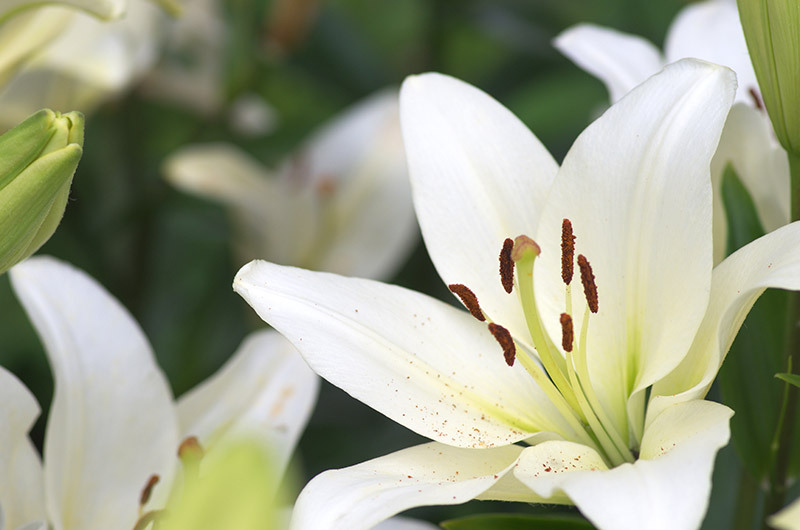Caring for Orchids: Expert Advice Revealed
Posted on 21/08/2025
Caring for Orchids: Expert Advice Revealed
If you've been fascinated by the exotic elegance of orchids, you're not alone. These stunning plants have captivated gardeners for centuries, gracing homes and greenhouses around the globe with their intricate blooms and rich colors. However, nurturing healthy and thriving orchids can be challenging without the right guidance. In this comprehensive article, we reveal expert orchid care tips, troubleshooting tricks, and essential knowledge to help your collection bloom brilliantly year-round.
Understanding Orchids: The Basics
Before diving into in-depth techniques, it's vital to understand what makes orchids unique among houseplants. With over 25,000 species, orchids adapt to a wide range of environments, but most of the popular houseplant varieties fall within the Phalaenopsis, Cattleya, Dendrobium, and Oncidium groups. Each has specific needs, but they all share common care requirements that can lead to rewarding, long-lasting growth -- with blooms that brighten any home.
Popular Types of Orchids
- Phalaenopsis (Moth Orchids): Perfect for beginners, they thrive indoors and produce beautiful arching sprays of flowers.
- Cattleya: Known for large, fragrant blooms, requiring brighter light than other common varieties.
- Dendrobium: A diverse group prized for their prolific bloom cycles and striking flowers.
- Oncidium: Often called 'Dancing Lady Orchids' due to their intricate, fluttering petals.

Essential Elements for Orchid Care
Caring for orchids starts with understanding their basic needs. Orchids may appear delicate, but they are resilient and long-lived with proper care. Here's what they require to thrive:
Light Requirements for Orchids
- Indirect Bright Light: Orchids need plenty of light, but too much direct sun can scorch leaves. East- or west-facing windows are ideal, providing filtered sunlight for most types.
- Leaf Color Indicator: Healthy orchid leaves are light to medium green. If the foliage turns dark green, your plant may need more light. Reddish spots may indicate too much light exposure.
- Supplemental Lighting: If natural sunlight is limited, use full-spectrum grow lights to supplement during winter months or in low-light spaces.
Watering Orchids Correctly
- Drainage is Key: Orchids dislike 'wet feet.' Always use pots with ample drainage holes.
- Let Medium Dry: Allow the potting medium to dry slightly between waterings. In general, watering once a week is sufficient for most indoor orchids.
- Use Room-Temperature Water: Orchids are sensitive to extremes. Always water with tepid, chlorine-free water to avoid stressing the roots.
The Best Potting Medium & Repotting
- Special Orchid Mixes: Never use regular soil. Opt for a specialized orchid mix composed of bark chips, sphagnum moss, perlite, and charcoal, which ensures maximum aeration.
- Repot Regularly: Repot your orchid every 1-2 years, ideally after blooming. This prevents root rot and provides fresh nutrients.
- Choose the Right Container: Clear plastic pots allow maximum light to reach the roots, mimicking orchids' natural epiphytic environment.
Humidity & Air Circulation
- Maintain Humidity: Orchids flourish in humidity between 50-70%. Use a humidity tray or room humidifier if your home air is dry, especially in winter.
- Encourage Air Movement: Good airflow prevents fungal diseases. Gently circulate air with a fan on low, but avoid direct drafts.
Fertilizing Orchids Efficiently
- Weakly, Weekly: Feed orchids weekly with a balanced, water-soluble fertilizer (20-20-20 or similar), diluted to one-quarter strength.
- Flush Regularly: Every month, flush the pot with plain water to remove fertilizer salts that can accumulate and burn roots.
- Adjust Feeding During Dormancy: Reduce fertilizing when your orchid isn't actively growing or blooming.
Expert Tips for Blooming Orchids
Getting an orchid to rebloom is one of the most rewarding aspects of orchid care. Here's how seasoned growers coax spectacular floral displays:
Triggering Flower Spikes
- Provide a Temperature Drop: For many orchids, especially Phalaenopsis, a difference of 10?F (6?C) between day and night for a few weeks encourages new spikes.
- Don't Cut New Spikes: If flowering ends and the spike stays green, don't cut it--side branches may produce more blooms.
- Regular Feeding: Bloom 'boosters' with higher phosphorus can be used during active spike production.
Pruning and Deadheading
- Remove Spent Blooms: Snip faded flowers to direct energy into new growth and prevent disease.
- Trim Carefully: Only cut spikes once they turn brown and dry, using sterilized scissors to prevent infection.
Dealing with Dormant Periods
- Patience is Key: Orchids naturally rest between bloom cycles. Continue regular care routines and allow the plant to recharge.
- Avoid Overwatering: Reduce watering slightly during periods of no growth or flowering.
Common Problems and How to Solve Them
Even under the best conditions, you may encounter some orchid care challenges. Here's a rundown of possible issues and simple solutions:
Yellow Leaves
- Too Much Water: This is the most common cause of yellowing leaves. Check the roots -- healthy roots are firm and white/green, while soggy, brown roots indicate rot.
- Nutrient Deficiency: If watering practices are correct, try supplementing with orchid-specific fertilizer.
Root Rot
- Poor Drainage: Always use pots and mediums that promote fast drainage and airflow.
- Cut Affected Roots: Remove mushy or black roots with sterilized scissors and repot in fresh medium.
Pests and Diseases
- Mealybugs, Aphids, and Spider Mites: Wipe leaves with a soapy cloth and treat severe infestations with insecticidal soap.
- Fungal Issues: Use a natural fungicide and improve air circulation. Remove infected tissues promptly.
No Blooms or Bud Drop
- Insufficient Light: Move the plant to a brighter spot, but avoid hot, direct sunlight.
- Stress from Changes: Avoid moving your orchid frequently or exposing it to cold drafts.
Advanced Orchid Care: Growing Your Collection
Ready to take your orchid plant care to the next level?
- Learn Propagation: Many orchids can be propagated from keikis (baby plantlets formed on flower spikes) or by division during repotting. This is a great way to expand your collection or share plants with friends.
- Try Different Genus: Once comfortable with easy-care Phalaenopsis varieties, experiment with more challenging types like Paphiopedilum or Vanda.
- Document Growth: Keep a garden journal or photo record to identify what care changes produce the best results for your specific plants and environment.

Frequently Asked Questions About Caring for Orchids
How often should I water my orchid?
Most orchids prefer to dry out slightly between waterings. This typically translates to watering every 5-10 days, though in humid conditions it can be less frequent. Never let your orchid sit in water, and always check that the potting medium feels dry before adding more moisture.
Do orchids like to be misted?
Light misting can increase humidity, but it's not essential if your air moisture is sufficient. Avoid wetting the leaves or crown area, which can lead to rot. Prefer using humidity trays or room humidifiers for best results.
What is the best temperature for orchids?
Ideal temperatures range between 65-80?F (18-27?C) during the day and 55-65?F (13-18?C) at night. Keeping temperatures in this range--along with a slight nighttime drop--helps promote flowering in many popular orchid types.
Can I grow orchids outdoors?
Yes, in mild climates or during warm summers, orchids can thrive outside in protected, shady spots. Always bring plants indoors before temperatures dip below 50?F (10?C).
Conclusion: Enjoy the Rewards of Confident Orchid Care
With the right knowledge and a little patience, anyone can enjoy the beauty of orchids in their home. Remember--successful orchid care isn't about following rigid rules, but understanding your plant's unique needs. By paying attention to light, water, and environmental conditions, and responding promptly to signs of stress, you'll foster robust growth and breathtaking flowers year after year.
Start small, keep learning, and enjoy the process. Whether you're a first-time orchid owner or a passionate plant collector, the journey of caring for these captivating blooms is nothing short of rewarding. Apply these expert tips, and watch your orchids thrive!
Latest Posts
Hydrangea Heaven: Cultivating Vibrant Blooms
A Journey into Peony Flowers: Exploring Their Symbolic and Colorful Impact
Caring for Orchids: Expert Advice Revealed






